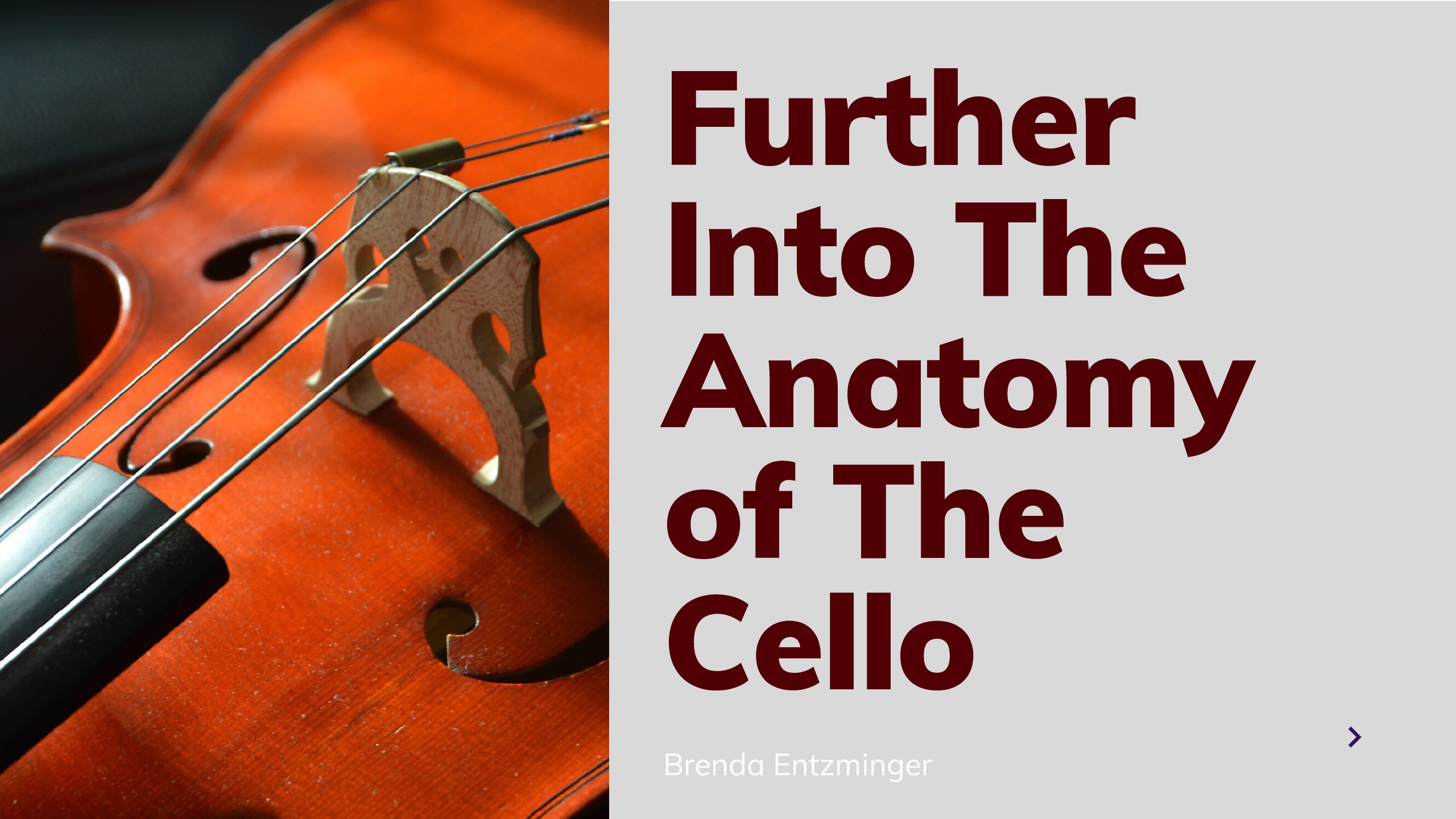The cello is truly an incredible instrument. The sound profile is incredibly unique, but the actual makeup of the cello is an incredibly complex and beautiful thing. To see our previous article on the anatomy of the cello click here.
The Scroll
The scroll is a decorative wood piece, carved at the end of the cello. It is usually carved out of the same piece of wood as the pegbox. The most common carving is a delicate scroll modeled after the volute of the Baroque period.
The Saddle
The saddle assists with the spread of the force of string tension away from the cello’s center. The pressure is then spread toward the endpin. It is found at the end of the cello right in front of the endpin and supports the tailgut.
The Ribs
The ribs, also known as the side, are crafted to hold the cello between the back and top, to create the sound profile. The cellos side are the wood pieces that run around the entire outer edge of the cello body. The ribs hold the two pieces apart created a resonant cavity.
The Purfling
The decorative edge of the cello looks good and keeps the instrument from developing cracks. Around the edge of the section seen a decorative edging known as “purfling.” This set has a decorative appeal and also helps reduce the chance of cracks.
The Pegbox and The Tuning Pegs
The pegbox holds the tuning pegs for the strings to wrap around for tuning. The pegbox houses strong tuning pegs for the strings to continue around for tuning. The other end of the strings is set at the tailpiece. Each is slightly tapered in shape, which allows the player to adjust the hold of the peg by applying more or less pressure and turning. Often, the pegbox and the scroll of the cello are carved out of a single piece of wood.
Check out our last installment on the anatomy of the cello, coming soon.
